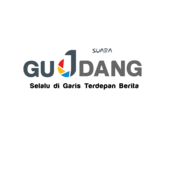The other day, I went to buy my first big Christmas gift of the year, and there it was, on the checkout page: Would I like to split this purchase up into four easy interest-free payments?
Parting with a smaller amount of money to get something you want sooner is a compelling offer. So compelling that half of all shoppers in the United States plan to use so-called “buy now, pay later,” or BNPL, services for holiday shopping this year, according to a PayPal survey. The same survey showed that one in four millennials and Gen Z-ers use payment options like Affirm and Klarna on a regular basis. These are the same young people who are having a hard time finding a job, struggling to pay overdue student loan bills, and dealing with rising food prices. That might be why it felt so dark when DoorDash announced a partnership with Klarna earlier this year, ushering in an era where people are taking out loans to pay for their takeout.
User Friendly
A weekly dispatch to make sure tech is working for you, instead of overwhelming you. From senior technology correspondent Adam Clark Estes.
As affordability becomes the dominant issue in American politics, the holiday shopping season feels different this year. Everything is more expensive, sure. But with BNPL options being offered by everyone from fintech startups to major banks, it’s also easier than ever to finance purchases you couldn’t otherwise afford. Meanwhile, the Trump administration has taken some of the guardrails off this shadowy lending industry, leaving consumers more vulnerable to unexpected fees and endless debt. Some are even warning that the precarious situation is starting to look a lot like the early days of the subprime mortgage crisis that led to the Great Recession.
“BNPL lenders are not currently required to [...] determine whether consumers can afford their BNPL loans,” said Nadine Chabrier, senior policy and litigation counsel at the Center for Responsible Lending. “There are currently no checks and balances on borrowers taking out multiple BNPL loans at the same time, which may lead to overextension.”
If you’ve seen The Big Short or simply followed along as history unfolded, this sounds pretty concerning. Before I get too carried away with warning of an imminent economic crisis, however, let’s review how these little loans work.
Buy now, pay later, hurt forever
In the industry’s early days, you were mostly likely to come across a BNPL option on the checkout page of an e-commerce website, probably one selling luxury goods. The option to pay in installments, often with zero interest, made it easier for consumers to pull the trigger on high-dollar items, so stores were quick to adopt the feature. The lenders would make their money by taking a small cut of the purchase price, and they would also charge the consumer fees for late payments.
Venture-backed fintech startups led the charge. Affirm, founded in 2012, helped take BNPL mainstream and Klarna joined the market in 2015. The pandemic supercharged the industry, and the dollar amount borrowed skyrocketed from $16.8 million in 2019 to $180 million in 2022, according to a Consumer Financial Protection Bureau (CFPB) report released that year. The average loan at the time was $135.
One big problem, as Chabrier pointed out, is that BNPL lenders typically don’t have to check to see if you can afford to take out a loan, and it’s possible to take out several at once, a practice known as “loan stacking.” These factors might explain why late payments are so common. More than 40 percent of BNPL users say they made a late payment in the last year, up from 34 percent last year, according to a Lending Tree survey. Meanwhile, more than 20 percent say they’ve had three or more loans going at once, and a quarter of people surveyed said they’ve taken out a BNPL loan to buy groceries.
This is a good time to highlight the fact that not all of these loans are interest-free. Both Affirm and Klarna say their interest rates can go as high as 36 percent (Klarna’s actually tops out at 35.99 percent, but it’s fair to round up). That’s still much lower than payday loans, which can get as high as 600 percent, but it’s a lot higher than zero.
Now back to the looming financial crisis. Until very recently, most BNPL loans weren’t reported to credit agencies, which meant there was very little visibility into who was borrowing and at what rates. During the Biden administration, the CFPB tried to regulate the industry by issuing a rule that would treat BNPL lenders like credit card companies, but the Trump administration rescinded that rule earlier this year. Around the same time, the company that makes the FICO score, a measure of how likely someone is to pay back a loan, said that it would introduce a new type of score that took BNPL debt into account. Those scores can currently only be seen by lenders, however, not consumers.
The BNPL industry remains largely unregulated at a national level. All that consumer debt, meanwhile, is becoming a financial product of its own. Elliott Investment Management just made a deal to buy $6.5 billion worth of debt from Klarna, as the fintech company expands its business into larger, longer-term loans for consumers. Affirm had sold nearly $12 billion worth of securitized debt as of June.
In a recent TechCrunch piece, Connie Loizos explained what BNPL companies are doing in bleak terms: “Slice up risky consumer debt, sell it to investors who believe they understand the risk profile, and create layers of financial engineering that obscure where the actual exposure lies.”
Again, it sounds a lot like the subprime mortgage crisis. It’s unclear if we should be using such big words for what’s happening at this moment, though.
“It would be premature to say there is a crisis,” Chabrier told me. “While it’s possible, we do not know enough about the scope of BNPL borrowing to say such a thing.”
What we can say, on an individual level, is that BNPL is getting more dangerous. The industry “has built a delirious new culture of consumption — and trapped users in a vortex of debt,” according to a New York Times Magazine feature on people who just started shopping, missed the fine print, and got in real trouble.
As this holiday shopping season kicks off, read the fine print. Or better yet, don’t buy now or pay later. The US economy may thank you for it.
A version of this story was also published in the User Friendly newsletter. Sign up here so you don’t miss the next one!















































